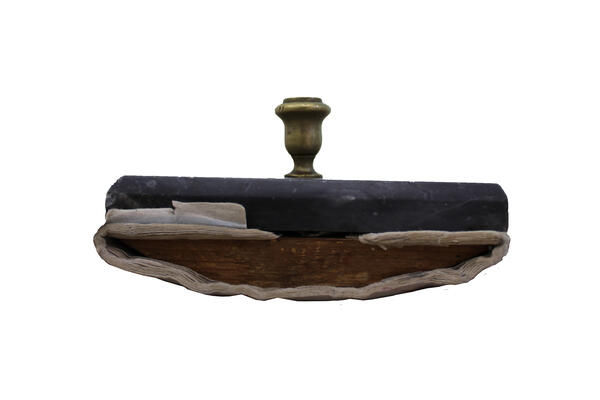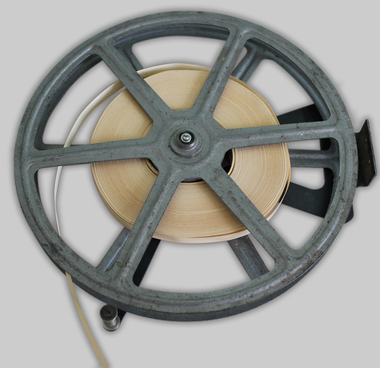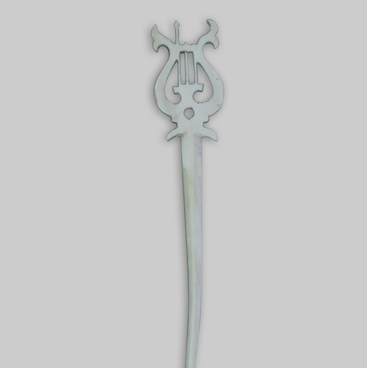A paperweight is a writing instrument in the form of a rounded bar with blotting paper stretched over it to absorb excess ink on the document. The name comes from the French words presser — ‘to press’ and papier — ‘paper’. Usually a paperweight was made in the form of a semicircular bar, but it could have different shapes. The materials were bronze, marble, brass, and glass. Often the paperweight was inlaid, decorated with amber or metal figures, giving it a decorative function. But mostly paperweights were used for blotting ink and fixing papers lying on the table.
Blotting paper appeared only in the second half of the XIX century and at first was called ‘pass’, ‘leak’ or ‘blotter’. This non-glued and low-pressure paper consists of almost pure cellulose: its structure has many small capillaries, thanks to which it quickly absorbs liquids, such as ink. Before the appearance of such paper, paperweights were supplemented with a sandbox-the text was sprinkled with fine sand so that it absorbed excess ink an fast drying of the document.
‘Blotting paper’ was widely used in schools before the era of ballpoint pens. Manufacturers of school notebooks usually put one piece of blotting paper in each notebook. Schoolchildren of that time wrote with ink fountain pens, and the superimposed on the sheet that had just been written sped up the drying process of the ink, and also prevented them from smearing on the notebook, hands and clothes of schoolchildren.
Currently, paperweights have become a desirable object for collectors — many of them are real works of art and become a status decoration of the desktop. For its intended purpose, it is used mainly as an element of business Protocol — when signing documents with an ink pen or nib.
On the handle of the paperweight presented at the exhibition, there is a monogram ‘S. N’. — it belonged to Sergey Naumov, a teacher who arrived in Yeniseysk in 1913 on the steamer ‘Saint Nicholas’.
Blotting paper appeared only in the second half of the XIX century and at first was called ‘pass’, ‘leak’ or ‘blotter’. This non-glued and low-pressure paper consists of almost pure cellulose: its structure has many small capillaries, thanks to which it quickly absorbs liquids, such as ink. Before the appearance of such paper, paperweights were supplemented with a sandbox-the text was sprinkled with fine sand so that it absorbed excess ink an fast drying of the document.
‘Blotting paper’ was widely used in schools before the era of ballpoint pens. Manufacturers of school notebooks usually put one piece of blotting paper in each notebook. Schoolchildren of that time wrote with ink fountain pens, and the superimposed on the sheet that had just been written sped up the drying process of the ink, and also prevented them from smearing on the notebook, hands and clothes of schoolchildren.
Currently, paperweights have become a desirable object for collectors — many of them are real works of art and become a status decoration of the desktop. For its intended purpose, it is used mainly as an element of business Protocol — when signing documents with an ink pen or nib.
On the handle of the paperweight presented at the exhibition, there is a monogram ‘S. N’. — it belonged to Sergey Naumov, a teacher who arrived in Yeniseysk in 1913 on the steamer ‘Saint Nicholas’.



